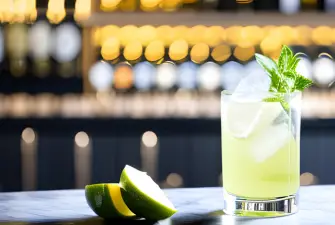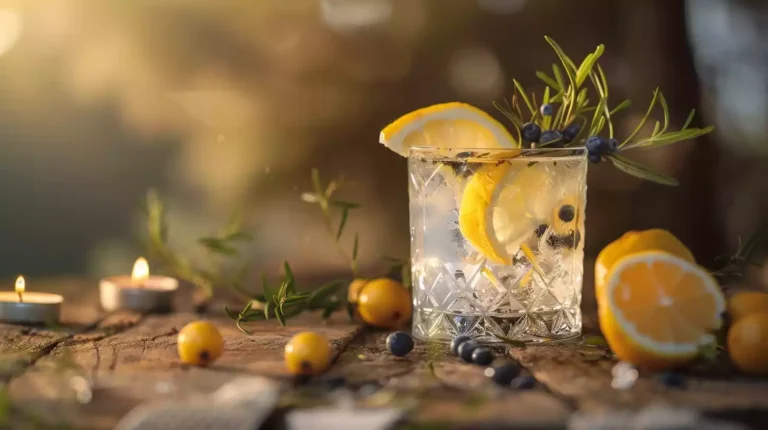What Are Gin Botanicals (14 Botanicals Explained)
If you’re looking to buy a gin for a special occasion or you just want a gin that you would probably really enjoy, it’s good to know what ingredients gin consists of.
Gin makers use a lot of different botanicals to create their gin. But what exactly are gin botanicals?
Botanicals are basically flowers, fruits, spices, seeds, etc. which you can add to a spirit. Producers of gin can use a wide variety of botanicals to give a certain flavor to their gin. Because there is such a vast amount of botanicals to choose from, no gin really tastes the same.
Without the botanicals in gin, it would just be a flavorless neutral grain spirit. But how exactly do these botanicals affect the taste of gin and which botanicals are most commonly used?
In this article, we’ll describe more in-depth how botanicals play a role in the production of gin. Also, we’ll give an overview of the most used botanicals.
How Are Botanicals Used In Gin
To understand how botanicals affect gin, we need to understand what goes into the production of gin and how botanicals are used in this production.
Gin can be created in multiple different ways, but they all start with the same step: the distillation of neutral grains. Most of the time a mix of barley, corn, rye, wheat, or other similar grains are mashed.
This mash of grains is then distilled once to make a neutral grain spirit.
After this distillation, the spirit cannot be classified as gin yet. For a spirit to legally be called a gin, the predominant flavor has to come from juniper berries.
During the addition of the juniper-like taste to the spirit, the botanicals come into play.
To add the flavors of juniper berries to the neutral grain spirit, gin-makers can use different techniques. The most used technique for this is to distill the spirit a second time, but this time you add the juniper berries to the process.
The berries can be added to the distiller by hanging them in a basket in the machine. During the distillation, the vapor of the spirit infuses with the juniper berries.
This way the flavors of the berries mix with the spirit to give it that unique piney flavor gin has to offer.
Now that the spirit has a predominant flavor of juniper berries, it can legally be classified as a gin. However, most gin-makers won’t be satisfied with just the flavors of the juniper berry in their gin.
Other than the predominant taste of juniper berries, gin-makers are completely free in what else they can add to their gin to give it a unique flavor.
Because of the freedom gin producers have, they add a lot more different herbs, flowers, spices, seeds, etc. (better known as botanicals) to the second distillation. This is why pretty much every gin tastes different.
Many gin producers don’t list all the botanicals on their labels. This makes it really difficult to find out exactly all the botanicals that are used by different gin producers.
Some botanicals are more common than others, however. Below, we list 14 of the most commonly used botanicals in gin.
1. Juniper Berries
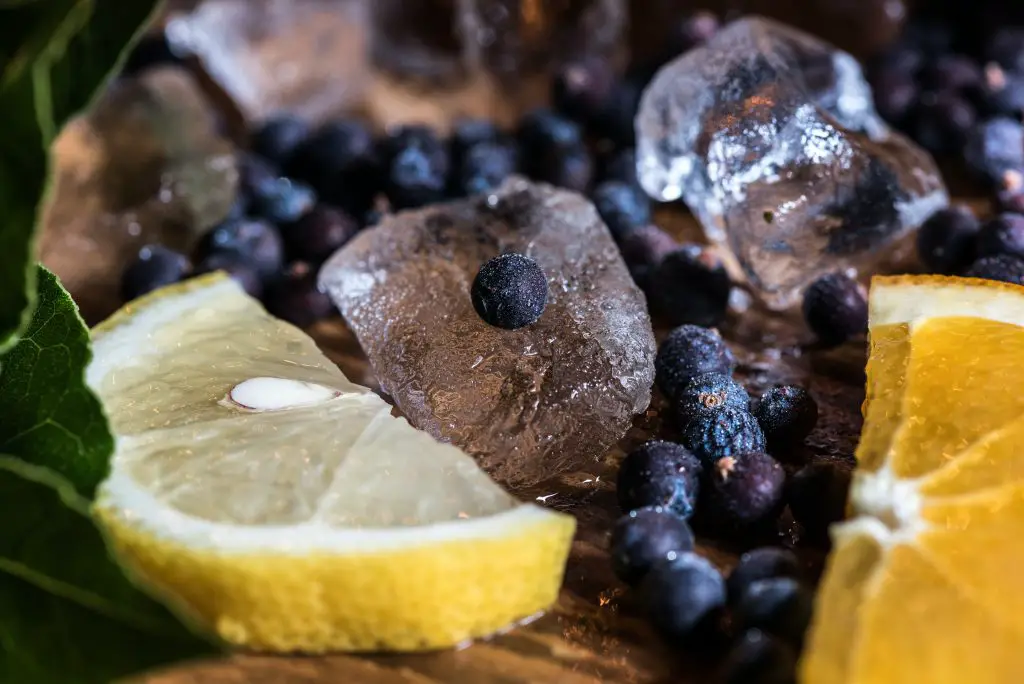
As we said before, gin is not gin without juniper berries, which is why juniper berries are number one on this list.
The word gin is derived from genever (or jenever), a Dutch drink also made from juniper berries (jeneverbessen in Dutch).
Juniper berries give gin the piney taste it is mainly known for. Other than the piney and almost Christmassy flavors juniper berries offer, it’s also responsible for a bit of a citrusy taste.
Juniper berries also offer a little bit of a woody, musty and spicy flavor to the drink.
Depending on where the juniper berries are grown, the ratio of how piney, citrusy, woody, etc. the berries taste is different.
This is why most gin-makers have a specific supplier of juniper berries so their spirit will always taste exactly how they want to.
2. Angelica (root)
Angelica is also a very commonly used botanical in gins. Other than for distilling gin, the angelica plant is used to make the fadno, which is a traditional musical instrument in Lapland and it is sometimes used in healing and protecting against negative energy.
Some gin distillers like to use the flowers and seeds from angelica, but most of the time just the root of this herb is used in the production of gin. Distilling the angelica gives it an earthy-like taste, which is bitter and also herbal.
A lot of distillers use angelica mostly because it is said that the herb is able to bind other botanicals together, making the flavors more complex and in-depth.
Even though this is widely accepted amongst gin-makers and gin drinkers, there is little to no scientific evidence that this is actually true.
3. Coriander
Coriander, also known as Chinese parsley, dhania, or cilantro, is a commonly used plant in cooking. Coriander seeds are part of the three most important flavorings in gin (next to juniper berries and angelica).
The taste of coriander seeds varies a ton based on where the plant is grown, which is why distillers spend hours looking for the right location.
The main component in coriander that gives it its taste is the essential oil called linalool. Linalool makes for a distinctive spicy and floral taste.
The molecular name for the second most dominant component in coriander is alpha-pinene, which is the main molecule in juniper berries. This is probably why these two botanicals mix so well.
Before adding the coriander seeds to the distillery, they are dried and then either crushed or roasted. All in all, this makes for citrusy, nutty, and spicy notes in gin.
4. Citrus
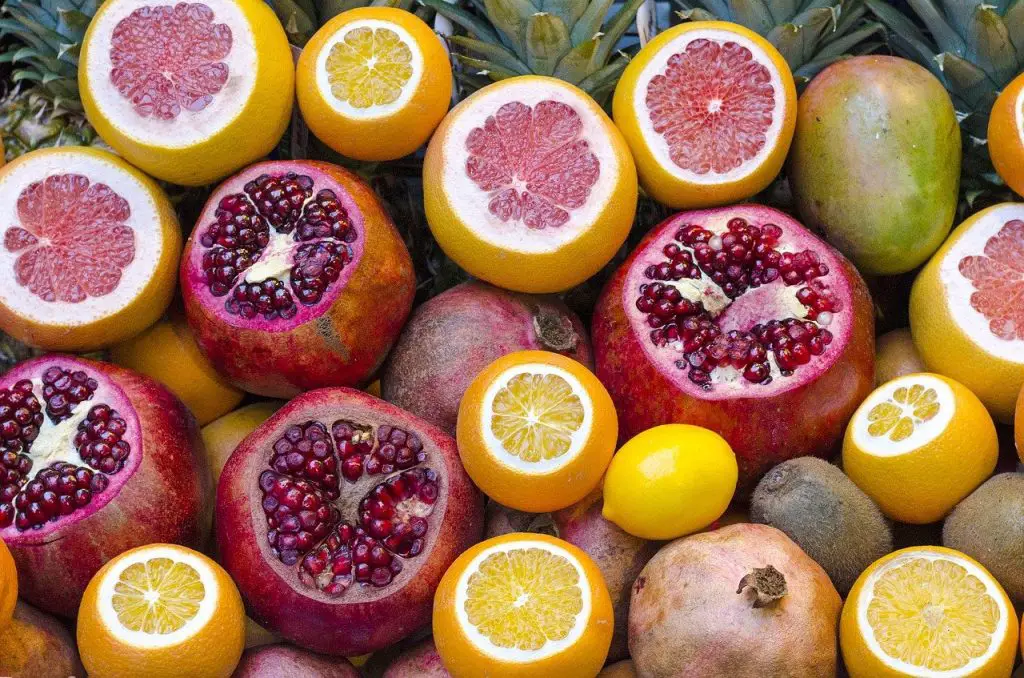
Citrus fruits, or actually only the citrus peels, are a very commonly used botanical in many gins. Some gin brands even base their entire taste palate around citrus fruits to create a citrusy spirit.
Besides using them during the distillery of gins, citruses are also used a ton in cooking recipes and garnishing different types of food and drinks.
Even though lemon and orange are the most used citrus fruits in gins, less commonly used citruses range from grapefruit to lime to bergamot. All these citruses can add different accents to gin, but they all really come down to the same flavors.
Citruses are mostly used to accentuate and complement the citrusy taste already added through juniper berries and coriander. Besides a citrusy flavor, they also add some juicy, sweet notes to gin and some make the spirit a bit zestier.
5. Lavender
Lavender isn’t actually quite as common as the previously mentioned botanicals, but lately, it has become more and more popular. Especially in American gins, lavender is becoming a bit more popular the last few years.
Even though lavender has been used in cooking and perfume for centuries, it has only started becoming popular in gins as of late. This is probably because lavender is a really strong fragrant plant of the mint family.
Lavender is often used as a counterpart to peppery and citrusy botanicals. This is why it is added with extreme caution as too much of it can ruin the whole drink.
Distillers sometimes include lavender in a gin basket or simply add the lavender at the last possible minute of distillation.
Often times though, small amounts are added only after distillation to avoid dominating the other flavors and creating a kind of soapy taste.
6. Cinnamon and Cassia
Cassia is a fairly similar botanical to cinnamon. They are pretty closely related to each other and have some of the same flavors. Cassia bark is harvested from the trunk of the tree and then made into small cylindrical rolls.
Cassia is sometimes wrongly referred to as cinnamon. You can see the difference between the two, by looking at the thickness of the bark.
Cassia is a lot thicker than cinnamon, which makes it harder to grind and it lends itself better for distillation. Cassia is therefore more commonly used in the production of gin than cinnamon.
The spicy taste of cinnamon is also found in cassia bark, but cassia tends to add a bit more sweetness to a food or drink than cinnamon does.
Cassia also adds a kind of chewing gum-like taste to gin. Lastly, cassia has a hint of licorice to it which brings us to our next botanical: licorice root.
7. Licorice root
The root of Glycyrrhiza Glabra, better known as licorice is sometimes used as an alternative to sugar in foods or drinks. Mainly licorice-flavored spirits are for instance: Sambuca and Jägermeister.
Licorice is ground to a fine powder before it can be distilled in gin. Even though licorice tastes similar to, for instance, anise (seed) and fennel, it is not related to these botanicals.
This botanical has a very complex taste palate in that it can seem similar to the candy licorice but tastes different at the same time.
When licorice is used in a gin it can add a sugary, earthy, but light and fresh, bittersweet taste. It’s kind of similar to anise but without the menthol-like flavors anise offers. Licorice adds a bit more viscous and oily texture to gin.
8. Cardamom
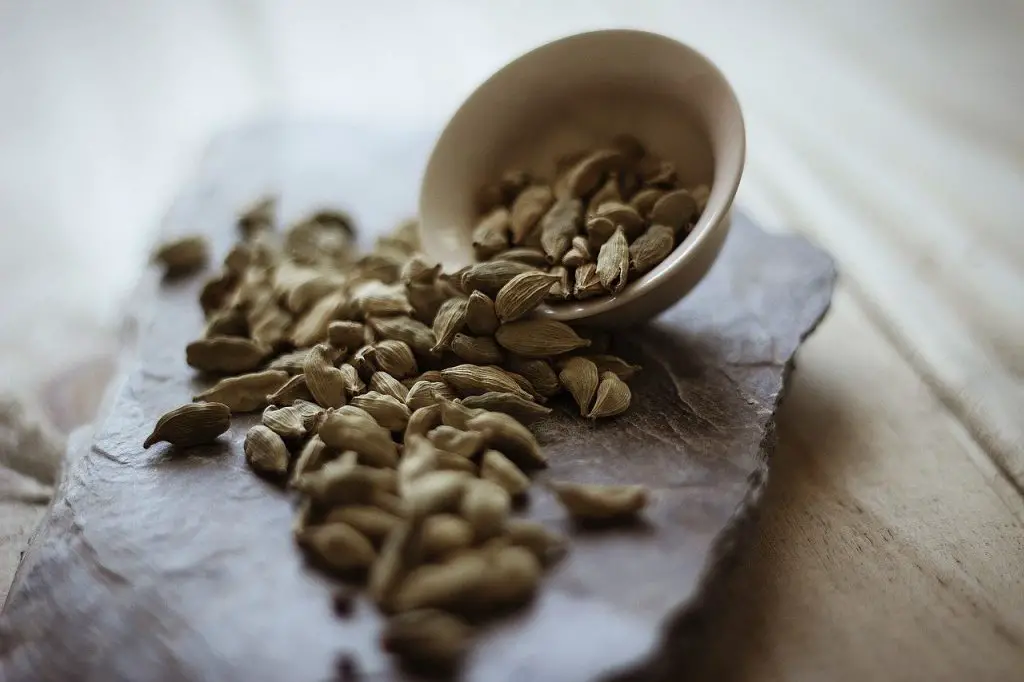
Cardamom is frequently found in multiple Asian cuisines, but as of late it is also quite commonly used in gins. The last decade has seen a big increase in gins which include cardamom.
The little green or black seeds, which hold all the flavor, that are inside the cranberry-sized pods come from a plant in the ginger family.
This botanical was first used for medicinal purposes before it was used for its taste. Ancient Egyptians used it for embalming and Greeks and Romans used it in fragrances. Nowadays Cardamom is sometimes used to treat depression.
The flavors cardamom adds to a gin are earthy, creamy, and peppery. It also gives off a warm sweetness and is a bit citrusy. The black cardamom seeds give gin a smokey taste, while the green seeds add some eucalyptus flavor.
9. Orris root
The root of an iris flower, an orris root, looks a lot like ginger. Aside from sometimes being used in gins, the orris root is a very common product in perfumes for its sweet scent.
Even though it’s a common botanical, the harvesting of the orris root takes an extremely long time.
The iris flower has to grow for 3 to 5 years before the roots are large enough to harvest, and before it can be used in gins, the root has to dry for several years.
Just like the angelica root, it is said that the orris root has the ability to bind different molecules which can help enhance tastes and scents.
But just like the angelica root, there is no scientific evidence about this at all. Research about this only really brought up more questions than it could answer.
The orris root brings many different tastes with it. Some of these flavors can be perceived as earthy, spicy, peppery, and dusty sweetness which is a bit hay-like and woody.
10. Cucumber
Cucumber has had its ups and downs in how much it is used in gins. It really only started to gain popularity in the late 1990s, during the so-called gin renaissance. Soon after, in the 2010s, its popularity began to die down a bit.
Even though there are not a lot of new distillers experimenting with cucumber, there are still quite a few brands with a distinct cucumber taste. Examples of these gins are Hendrick’s gin, Martin Millers’ gin, and Knut Hansen Dry Gin.
Cucumber doesn’t have really outstanding flavors like some of the other botanicals but it does add a nice touch to some gins.
The aroma of cucumber can be described as melon and bitter and some people like to describe its taste as ‘green‘ although this probably doesn’t say much to most people.
11. Rosemary

Just like a lot of other botanicals, rosemary wasn’t so commonly used in gins, but its popularity is steadily rising in the last years.
Rosemary has been a popular ingredient in cooking for a very long time, but it also works great as a garnish in a cocktail and even as a botanical in gin.
Rosemary is a bit like lavender in the sense that it can really dominate over other flavors if it’s used too much. Therefore, distillers often use a very small amount of rosemary to flavor their gin.
Even then, rosemary sometimes has the ability to completely change the outcome of the spirit. The flavors rosemary add to gin are mostly bitter, piney, and woody with a small perfume-like sweetness.
12. Cubeb
Cubeb berries are a member of the pepper family and they look and taste quite similar to black pepper. Despite looking similar to the black pepper, cubeb berries are easy to distinguish as they are sold with their ‘tails’ (or stalks) still attached.
These berries have played a role in medicine in the past, but more recently they are used in Indonesian and Moroccan cuisine and in some drinks like gin and the Russian vodka ‘Pertsovka’.
The taste these berries give is as expected a bit spicy and peppery, but they can also add some lemon notes and floral, eucalyptus-like notes to a gin.
13. Nutmeg
Nutmeg has been an incredibly popular spice for a big part of history. For example, English colonials fought over control of the Spice Islands, on which the nutmeg tree originated.
Also later, the Dutch East India Company took extreme measures to protect the nutmeg from being smuggled out of the areas where they were grown on the Spice Islands.
Aside from being used in gin distillation, nutmeg is used in cuisine from all around the world. In America it’s used in pumpkin pie, Italians use it in tortellini, and in Indonesia, it is added to a variety of soups.
Nutmeg is also used in pharmaceuticals and perfumery because of its essential oil, which is obtained during distillation with steam.
In gin, the nutmeg brings woody, earthy, and sweet aromatic flavors. It also adds a warming spice to the finish that lingers around for a bit.
14. Ginger
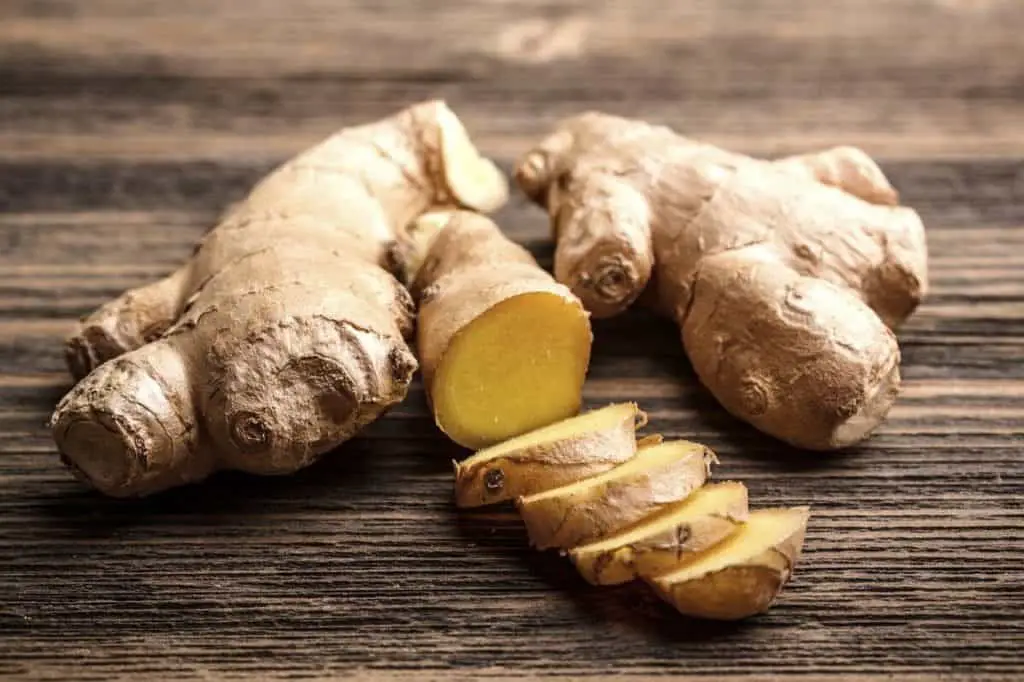
The last botanical on this list, ginger, is definitely not the least of them. When we talk about ginger, we’re talking about the root of the Zingiber Officinale plant, which originates from the islands of southeast Asia.
India is currently the biggest producer of ginger in the world.
After harvesting, ginger is scalded or peeled to prevent budding. The root can be used fresh, or it can be dried or ground into powder. Ginger is used as a botanical in gin, but it’s also a very popular garnish in (gin) cocktails.
Ginger has a little hint of lemon, and is a little bit peppery and spicy. This botanical also has a fresh and sharp aroma to it.
Final Thoughts
Gin is a neutral grain spirit flavored by infusing it with natural ingredients like herbs, flowers, seeds, spices, etc. (also known as botanicals).
The main botanical in gin has to be the juniper berry for legal reasons, but other than that, a gin-maker is free to add pretty much any botanical to their gin that they see fit.
This is why there is a ton of variety in gins on the market right now.
Aside from juniper berries, pretty much every gin contains angelica root and coriander. A few other commonly used botanicals are different citruses, coriander, and cassia.
In this article, we’ve explained 14 of the most used botanicals in gin, but there are a ton more botanicals that can be used by gin-makers.

